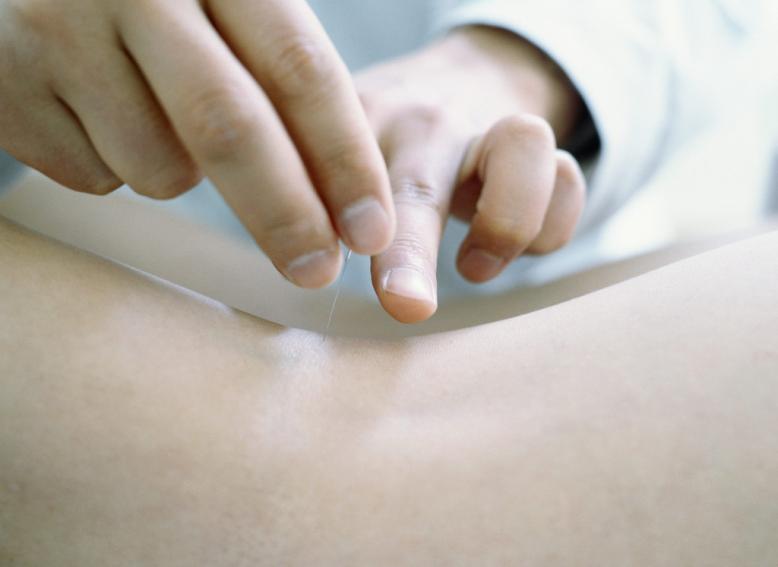Published Articles
1. Brain insulin action regulates hypothalamic glucose sensing and the counterregulatory response to hypoglycemia.
Read Abstract | Close Abstract | Read Full Text
Authors: Diggs-Andrews KA, Zhang X, Song Z, Daphna-Iken D, Routh VH, Fisher SJ.
Division of Endocrinology, Metabolism and Lipid Research, Department of Internal Medicine, Washington University School of Medicine, Saint Louis, Missouri, USA.
Abstract:
OBJECTIVE: An impaired ability to sense and appropriately respond to insulin-induced hypoglycemia is a common and serious complication faced by insulin-treated diabetic patients. This study tests the hypothesis that insulin acts directly in the brain to regulate critical glucose-sensing neurons in the hypothalamus to mediate the counterregulatory response to hypoglycemia.
RESEARCH DESIGN AND METHODS: To delineate insulin actions in the brain, neuron-specific insulin receptor knockout (NIRKO) mice and littermate controls were subjected to graded hypoglycemic (100, 70, 50, and 30 mg/dl) hyperinsulinemic (20 mU/kg/min) clamps and nonhypoglycemic stressors (e.g., restraint, heat). Subsequently, counterregulatory responses, hypothalamic neuronal activation (with transcriptional marker c-fos), and regional brain glucose uptake (via (14)C-2deoxyglucose autoradiography) were measured. Additionally, electrophysiological activity of individual glucose-inhibited neurons and hypothalamic glucose sensing protein expression (GLUTs, glucokinase) were measured.
RESULTS: NIRKO mice revealed a glycemia-dependent impairment in the sympathoadrenal response to hypoglycemia and demonstrated markedly reduced (3-fold) hypothalamic c-fos activation in response to hypoglycemia but not other stressors. Glucose-inhibited neurons in the ventromedial hypothalamus of NIRKO mice displayed significantly blunted glucose responsiveness (membrane potential and input resistance responses were blunted 66 and 80%, respectively). Further, hypothalamic expression of the insulin-responsive GLUT 4, but not glucokinase, was reduced by 30% in NIRKO mice while regional brain glucose uptake remained unaltered.
CONCLUSIONS: Chronically, insulin acts in the brain to regulate the counterregulatory response to hypoglycemia by directly altering glucose sensing in hypothalamic neurons and shifting the glycemic levels necessary to elicit a normal sympathoadrenal response.
PMID: 20547974 [PubMed - indexed for MEDLINE] PMCID: PMC2927950 [Available on 2011/9/1]
Close Abstract
|
2. Isoflurane-induced neuroapoptosis in the neonatal rhesus macaque brain.
Read Abstract |Close Abstract | Read Full Text
Authors: Brambrink AM, Evers AS, Avidan MS, Farber NB, Smith DJ, Zhang X, Dissen GA, Creeley CE, Olney JW.
Department of Anesthesiology and Perioperative Medicine, Oregon Health and Science University, Portland, Oregon 97239-3098, USA.
Abstract:
BACKGROUND: Brief isoflurane anesthesia induces neuroapoptosis in the developing rodent brain, but susceptibility of non-human primates to the apoptogenic action of isoflurane has not been studied. Therefore, we exposed postnatal day 6 (P6) rhesus macaques to a surgical plane of isoflurane anesthesia for 5 h, and studied the brains 3 h later for histopathologic changes.
METHODS: With the same intensity of physiologic monitoring typical for human neonatal anesthesia, five P6 rhesus macaques were exposed for 5 h to isoflurane maintained between 0.7 and 1.5 end-tidal Vol% (endotracheally intubated and mechanically ventilated) and five controls were exposed for 5 h to room air without further intervention. Three hours later, the brains were harvested and serially sectioned across the entire forebrain and midbrain, and stained immunohistochemically with antibodies to activated caspase-3 for detection and quantification of apoptotic neurons.
RESULTS: Quantitative evaluation of brain sections revealed a median of 32.5 (range, 18.0-48.2) apoptotic cells/mm of brain tissue in the isoflurane group and only 2.5 (range, 1.1-5.2) in the control group (difference significant at P = 0.008). Apoptotic neuronal profiles were largely confined to the cerebral cortex. In the control brains, they were sparse and randomly distributed, whereas in the isoflurane brains they were abundant and preferentially concentrated in specific cortical layers and regions.
CONCLUSIONS: The developing non-human primate brain is sensitive to the apoptogenic action of isoflurane and displays a 13-fold increase in neuroapoptosis after 5 h exposure to a surgical plane of isoflurane anesthesia.
PMID: 20234312 [PubMed - indexed for MEDLINE]
Close Abstract
|
3. Induction of GABAergic postsynaptic differentiation by alpha-neurexins.
Read Abstract | Close Abstract | Read Full Text
Authors: Kang Y, Zhang X , Dobie F, Wu H, Craig AM.
Brain Research Centre and Department of Psychiatry, University of British Columbia, Vancouver, British Columbia V6T 2B5, Canada.
Abstract:
Beta-neurexin and neuroligin cell adhesion molecules contribute to synapse development in the brain. The longer alpha-neurexins function at both glutamate and gamma-aminobutyric acid (GABA) synapses in coupling to presynaptic calcium channels. Binding of alpha-neurexins to neuroligins was recently reported, but the role of the alpha-neurexins in synapse development has not been well studied. Here we report that in COS cell neuron coculture assays, all three alpha-neurexins induce clustering of the GABAergic postsynaptic scaffolding protein gephyrin and neuroligin 2 but not of the glutamatergic postsynaptic scaffolding protein PSD-95 or neuroligin 1/3/4. alpha-Neurexins also induce clustering of the GABA(A) receptor gamma2 subunit. This synapse promoting activity of alpha-neurexins is mediated by the sixth LNS (laminin neurexin sex hormone-binding protein) domain and negatively modulated by upstream sequences. Although inserts at splice site 4 (S4) in beta-neurexins promote greater clustering activity for GABA than glutamate proteins in coculture assay, alpha-neurexin-specific sequences confer complete specificity for GABA proteins. We further report a developmental increase in the ratio of -S4 to +S4 forms of neurexins correlating with an increase in glutamate relative to GABA synaptogenesis and activity regulation of splicing at S4. Thus, +S4 beta-neurexins and, even more selectively, alpha-neurexins may be mediators of GABAergic synaptic protein recruitment and stabilization.
PMID: 18006501 [PubMed - indexed for MEDLINE] PMCID: PMC2811689
Close Abstract
|
4. Neurexins induce differentiation of GABA and glutamate postsynaptic specializations via neuroligins.
Read Abstract | Close Abstract | Read Full Text
Authors: Graf ER, Zhang X, Jin SX, Linhoff MW, Craig AM.
Department of Anatomy and Neurobiology, Washington University School of Medicine, 660 S. Euclid Avenue, St. Louis, MO 63110, USA.
Abstract:
Formation of synaptic connections requires alignment of neurotransmitter receptors on postsynaptic dendrites opposite matching transmitter release sites on presynaptic axons. beta-neurexins and neuroligins form a trans-synaptic link at glutamate synapses. We show here that neurexin alone is sufficient to induce glutamate postsynaptic differentiation in contacting dendrites. Surprisingly, neurexin also induces GABA postsynaptic differentiation. Conversely, neuroligins induce presynaptic differentiation in both glutamate and GABA axons. Whereas neuroligins-1, -3, and -4 localize to glutamate postsynaptic sites, neuroligin-2 localizes primarily to GABA synapses. Direct aggregation of neuroligins reveals a linkage of neuroligin-2 to GABA and glutamate postsynaptic proteins, but the other neuroligins only to glutamate postsynaptic proteins. Furthermore, mislocalized expression of neuroligin-2 disperses postsynaptic proteins and disrupts synaptic transmission. Our findings indicate that the neurexin-neuroligin link is a core component mediating both GABAergic and glutamatergic synaptogenesis, and differences in isoform localization and binding affinities may contribute to appropriate differentiation and specificity.
PMID: 15620359 [PubMed - indexed for MEDLINE] PMCID: PMC2826211
Close Abstract
|
5. KRIP6: a novel BTB/kelch protein regulating function of kainate receptors.
Read Abstract | Close Abstract | Read Full Text
Authors: Laezza F, Wilding TJ, Sequeira S, Coussen F, Zhang XZ, Hill-Robinson R, Mulle C, Huettner JE, Craig AM.
Department of Anatomy and Neurobiology, Washington University School of Medicine, St. Louis, MO 63110, USA.
Abstract:
Whereas many interacting proteins have been identified for AMPA and NMDA glutamate receptors, fewer are known to directly bind and regulate function of kainate receptors. Using a yeast two-hybrid screen for interacting partners of the C-terminal domain of GluR6a, we identified a novel neuronal protein of the BTB/kelch family, KRIP6. KRIP6 binds to the GluR6a C-terminal domain at a site distinct from the PDZ-binding motif and it co-immunoprecipitates with recombinant and endogenous GluR6. Co-expression of KRIP6 alters GluR6 mediated currents in a heterologous expression system reducing peak current amplitude and steady-state desensitization, without affecting surface levels of GluR6. Endogenous KRIP6 is widely expressed in brain and overexpression of KRIP6 reduces endogenous kainate receptor-mediated responses evoked in hippocampal neurons. Taken together, these results suggest that KRIP6 can directly regulate native kainate receptors and provide the first evidence for a BTB/kelch protein in direct functional regulation of a mammalian glutamate receptor.
PMID: 17254796 [PubMed - indexed for MEDLINE] PMCID: PMC1939939
Close Abstract
|
6. The Improvement of Memory of Vascular Dementia Rats by Ear-acupuncture and Its Relationship with the Expression of nNOS
Read Full Text (English Version) | Read Full Text (Chinese Version)
Authors: Zhang Xuezhao, Xiao Maolei, Sun Guojie, et al.
Journal of Acupuncture and Moxibustion of Shanghai (in Chinese). 2001, 19(1):39-41; Journal of Acupuncture and Moxibustion of Shanghai (in English). 2001,1:73-76
Note: English version, published in China
|
7. Development of Studies on Acupuncture treating Vascular Dementia and its mechanism
Read Full Text (Chinese Version)
Authors: Zhang Xuezhao, Xiao Maolei, Sun Guojie.
ACTA Medicine Sinica. 2000, 13(4): 256-258
|
8. Correlation between auricular acupuncture improvement deficit of memory function and expression of bcl-2 protein in vascular dementia rats
Read Full Text (Chinese Version)
Authors: Zhang Xuezhao, Xiao Maolei, Sun Guojie
Acupuncture Research. 2001,(2):106-109
|
9. Effect on Auricular needling on memory and expression of apoptosis-related proteins in hippocampus in Rats of vascular dementia
Read Full Text (Chinese Version)
Authors: Zhang Xuezhao, Lv Mingzhuang, He Zhiguang, et al
Chinese Acupuncture & Moxibustion. 2001,21(8):499-500
|
10. Comparison of three kinds of the differential display technigues
Read Full Text (Chinese Version)
Authors: Zhang Xuezhao, Sun Guojie
Chinese Acupuncture & Moxibustion. 2001,21(11):691-694
|
11. Effections of Acupuncture on the Rat of Trainsient Focal Brain Ischemia and Reperfusion and the Brain-derived Neurotrophic Factor mRNA
Read Full Text (Chinese Version)
Authors: Zhang Xuezhao, Sun Guojie
Chinses Journal of Neuroimmunology and Neurology. 2004, 11 (2), 98-101.
|
12. The relationship between hypomnesia and expression of neuronal nitric oxide synthase in hippocampus in vascular dementia rats
Read Full Text (Chinese Version)
Authors: Zhang Xuezhao, Xiao Maolei, Cai Wenqing, et al
Chinese Journal of Anatomy. 2001,24(4):340-342
|
13. Isolation of differentially expressed cDNAs from the hippocampus of rats with vascular dementia by RNA fingerprinting
Read Full Text (Chinese Version)
Authors: Zhang Xuezhao, Sun Guojie.
Chinese Journal of Geriatrics. 2003, 22 (3), 169-171
|
14. The Expression of c-fos in the Hippocampus and Relationship between Auricular Acupuncture Treatment and the Cognitive Enhancing in Vascular Dementia
Read Full Text (Chinese Version)
Authors: Zhang Xuezhao, Xiao Maolei, Sun Guojie
Journal of Clinical Acupuncture and Moxibustion. 2000,16(12): 34-36
|
15. Auricular acupuncture treat hiccup
Read Full Text (Chinese Version)
Authors: Zhang Xuezhao
Journal of TCM of Zejiang.1990,25(3):136
|
16. Observations effect of auricular acupuncture help weight-loss with 30 patients
Read Full Text (Chinese Version)
Authors: Zhang Xuezhao
Journal of TCM of Zejiang. 1989,4:34
|
Dr. Shanna Zhang – Licensed Acupuncturist & Chinese Medicine Doctor
Expert in Acupuncture and Chinese Herbs in St. Louis
Acupuncture for Pain
Our acupuncturist uses acupuncture for various types of pain:
back pain, joint pain, neck pain, shoulder pain,
Low-back pain, menstrual cramps, osteoarthritis/knee pain,
postoperative dental pain, cancer pain and headache /migraine.
Our Acupuncture & Chinese Herbal Medicine Health Center also Provides
Massage or Asian Bodywork,
Scalp Acupuncture,
Moxibustion,
Chinese Herbal Treatment,
Gua Sha (Scraping therapy),
Infrared (heat) therapy...
Our Acupuncture & Chinese Herbal Medicine Health Center Provides
Medical Acupuncture,
Auricular Acupuncture,
Cupping,
Acupressure,
Trigger point therapy,
Electro-Stimulation Acupuncture...
We Provide Acupuncture & Chinese Herbal Medicine for
Musculoskeletal,
Women's Health,
Mental Health,
Respiratory System,
Skin Disorders,
Digestive System,
Neurological System,
Eye, Ear, Dental...
Our Accupuncturist & Oriental Doctor Specializes in
Pain Management,
Sports’ Injury,
Women’s Health,
Skin Conditions,
Allergy,
Weight Loss...
We Provide Acupuncture For Weight Loss
Acupuncture and Chinese herbs can be your key to healthy weight loss by
boosting metabolism,
promoting optimal digestion
increasing energy,
decreasing appetite,
regulating obesity-related hormones and enhancing the way nutrients are used,
and targeting fat loss in specific problem areas.
Call or email to schedule the consultation and treatment
314-644-0056
authentic.acupuncture@gmail.com
|
News, Posts, Read About
Conditions Treated
7306 Wise Ave.
Richmond Heights, MO 63117
Call or Email
(314) 600-3144
authentic.acupuncture@gmail.com
Customer Reviews:
Google
Yelp
|





